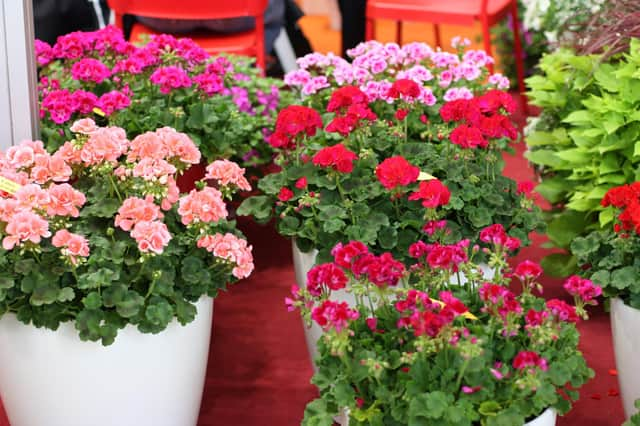Gardening: Choosing the right plants for your containers | Brian Kidd


It is important to ensure there are holes in the base and, before filling with compost, pieces of broken clay flower pot too. These are called crocks and are placed over the holes so excess water can escape.
Four little feet can be used to keep the container off the paving. This is a good idea because it improves drainage andalso stops worms getting into the compost. Worms are wonderful in the open ground but in pots they eat all the fibrous material and the compost ends up like silt.
Advertisement
Hide AdAdvertisement
Hide AdThe best compost for containers is John Innes Number 3 potting compost. It is the strongest because it contains more fertiliser than the others and because it has loam in the mixture. Therefore, the trace elements in the loam are less likely to be washed out of the compost.
Proprietary brands are available but a lot of gardeners will tell you some are disappointing because the compost seems to become ‘cloggy’. This problem is easily remedied by adding 10 per cent extra sharp sand or potting sand and mixing this well before filling the containers.
The choice of plants and colours is a personal thing but do try to get away from ‘mixed’.
Think about colour schemes. Red and yellow are contrasting colours; they are both bright and will add radiance. Pink, blue and grey together look elegant, adding serenity and quietness. Orange, yellow and white look great in dull areas because they add a touch of sunshine.
Advertisement
Hide AdAdvertisement
Hide AdThe great thing is we can find suitable plants for any of these colour schemes as nearly everything to be planted now is flowering at garden centres and nurseries. Isn't it great to be able to visit them again?
Geraniums, petunias, busy Lizzies, Bidens, verbena and begonias are in flower now and will be for the entire summer. A combination of these will be ideal for that container. Don’t go for asters, 10-week stocks and Livingstone daisies as the flowering time is far too short. Plant these in borders.
Plant the edge with petunia Blue Vein. Three will cover the largest tub in four weeks and the perfume is wonderful, so plant by a door.
New to gardening? Here’s a tip… at the garden centre, choose plants in pots and set them on the ground to see how many you need. A container three feet wide only needs nine plants in three-inch pots. Remember, when planting, the plants are knocked out of the pots!
Advertisement
Hide AdAdvertisement
Hide AdWatering is important. The first is best done with a rose on the can and the plants need a good soak. After this, feel the surface of the compost and water when it feels dry.
Feeding starts four weeks after planting. I use Maxicrop All Complete plant food. This is organic and contains all the plants’ requirements. It feeds the compost and the plants absorb what they need. The fertiliser can be changed if the flowers seem scarce, so Maxicrop for tomatoes is an excellent choice.
THIS WEEK’S TOP TIP
Spring-flowering shrubs and hedges need to be cut back.
If you take green waste to a recycling centre, you’ll get more in the car if it’s cut up so it can be put in large plastic sacks. This makes it far quicker to dispose of at the centre.
Comment Guidelines
National World encourages reader discussion on our stories. User feedback, insights and back-and-forth exchanges add a rich layer of context to reporting. Please review our Community Guidelines before commenting.